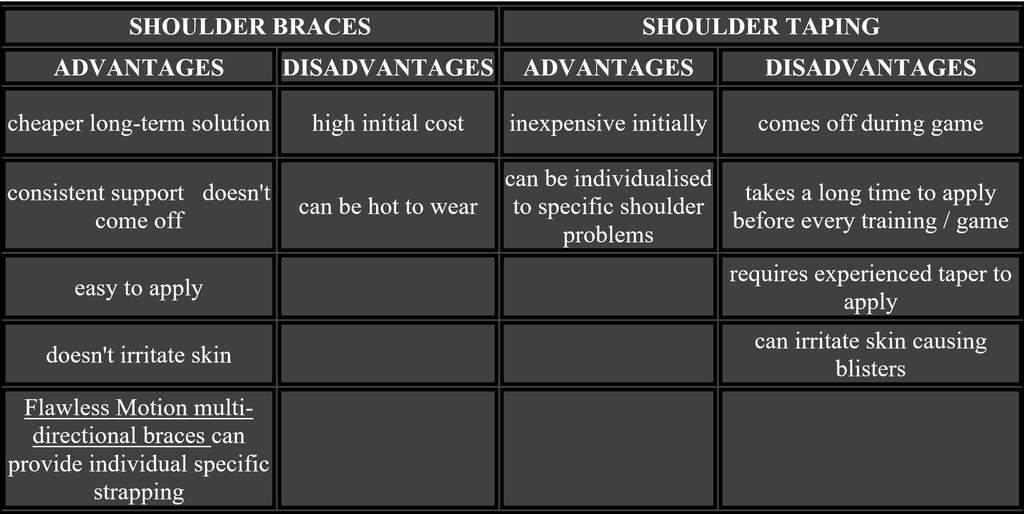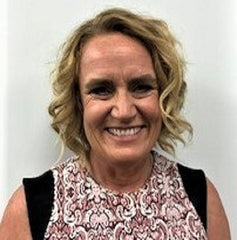Shoulder taping vs. bracing
by Margie Olds

Shoulder taping and wearing a brace both provide support for your shoulder. However, there are several key differences between having your shoulder taped vs. wearing a shoulder brace.
Advantages of shoulder bracing
When compared to shoulder taping, there are several key advantages to wearing a shoulder brace.These include:
- cheaper long term solution
- provide consistent support through the game, even when sweating
- does not require experienced person to apply brace (see instruction video on how to apply)
- is quick to apply before each game or training session
- does not irritate skin
Disadvantages of shoulder bracing
Obviously there are also some disadvantages of wearing shoulder brace. These include:
- Initial high one-off cost
- Can be hot to wear during summer months
Advantages of shoulder taping
Shoulder taping is a good short-term option to see whether more support, or feedback from your skin increases your confidence, and restricts your shoulder movement. Shoulder taping can be varied according to your specific shoulder problem. Therefore, key advantages are listed as follows:
- good short term solution
- inexpensive short-term solution
- can be individualised to specific shoulder problems
Disadvantages of shoulder taping
However, despite the fact that there are some advantages to shoulder taping, there are also some limitations of having your shoulder strapped. These include the following:
- requires a skilled person to apply the strapping
- takes a long time to strap shoulders effectively
- expensive when required for long-term shoulder management
- comes off through the game and no longer provides protection
- takes quite a long time to apply tape before every training session / game
- can pull on skin and cause skin irritation, sometimes resulting in medium to long term scarring

These can all be summarised in the following table


Dr Margie Olds is a internationally renowned physiotherapist with a special interest in shoulder injuries. She developed the Flawless Motion braces to help people get back into sport as quickly and safely as possible. Her PhD is on predicting shoulder dislocations after injury and she has recently published research introducing a new clinical test battery for return to sport after a shoulder injury. Click here for the research.






